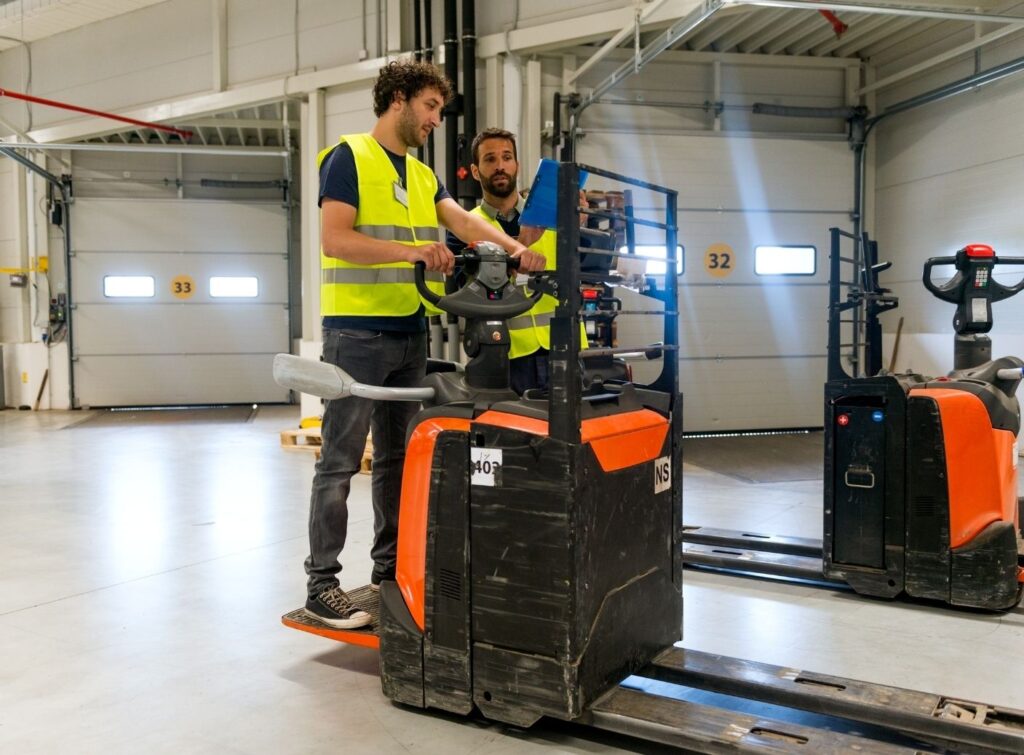Forklift Operator Training
A Few of the Different Kinds of Forklifts and Their Uses
It’s essential to know the type of forklift your operators drive. Not only that, but warehouse supervisors need to ensure each driver understands the class-types and uses for each lift. Here’s a brief list of a few of the different kinds of forklifts and their uses.
Rough Terrain Forklift
Typically used for outside jobs, the rough terrain forklift, class VII, can drive over uneven terrain in rural or metropolitan areas. If most of the work occurs outdoors, you’ll want the rough terrain forklift to help transfer different pallet sizes to other ends of the lot.
Additionally, the vehicle uses a particular tire type that allows the operator to get over rugged terrain efficiently. Many companies offer foam-filled tires for their new trucks, in place of the traditional air-filled tires. This move eliminates the issues caused by over or under inflated tires. The tires on rough terrain forklifts have specially designed grooves that enable the lift to go over hilly surfaces and rocky roads.
The most important feature is the reinforced cage that surrounds the operator.
Many trucks come with safety glass on the front, back, and sides. The enclosed cab is a good defense against flying debris, such as dirt and rocks. It also helps when working in inclement weather.
A rough terrain forklift’s biggest advantages include:
- It is suitable for outdoor use on a rough terrain.
- It has a glass enclosed cage to protect operators.
- It has specialized tires to move over hills and other areas.
Counterbalance Forklift
The counterbalance, which includes class I, IV, & V forklifts, are the most popular to use in the warehouse.
These are very versatile forklifts that can be used to operate a large variety of attachments and can be built to handle both heavy and light loads. Another great feature about this type of lift truck is its many variants, such as the three-wheeled electric class I counterbalance forklift. The three-wheeled forklift helps a lot when a driver needs to turn in narrow aisles as this forklift has smaller turning radius than a traditional four-wheel counterbalance forklift.
The other type is the stand-up counterbalance class I forklift. With the assistance of a lever/joystick, the stand-up counterbalance lift allows users to get off and on safely between loads. Like the three-wheel forklift, this life has a tight turning radius.
The best features of the counterbalance stand up forklift include:
- tight turning radius
- Its lever handle
- It enables users can get off and on easier
Pallet Jack
The electric pallet jack is a class III forklift or Powered Industrial Truck (PIT). They can be a rider (platform for the operator to stand on), a walk behind, or even a walkie (where the forks raise outward and/or lift height more than 8 inches off ground). Operators traditionally travel with the load trailing. If they must, they can move the forklift in front of themselves for short positioning moves. You can fit this lift safely in tight areas that don’t have a lot of movability.
Two advantages of pallet jacks are that their compact size works for tight spaces, and their small size works for moving things long distances.
There’s more to learn than just the different forklift types and their uses. There are also forklift training classes where you can learn about the various lift classes and how each one operates.
First Quality Forklift Training ensures every operator learns up-to-date information on how to safely operate the forklift. We teach operators about the classes and how people use lifts in and out of the workplace. Contact us here for more information on forklift training classes for your future operators.


